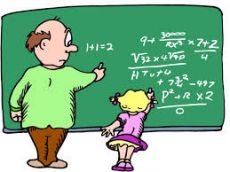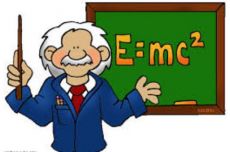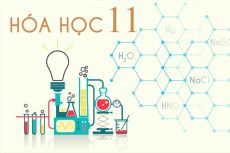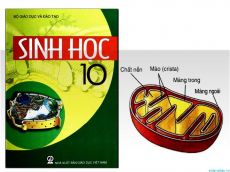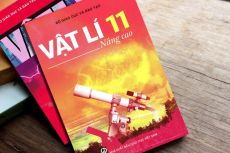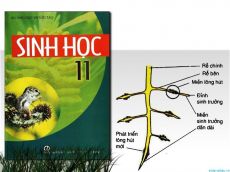Choose the best answer:
The hotel where we are __________ is quite luxurious.
Hãy suy nghĩ và trả lời câu hỏi trước khi xem đáp án
Lời giải:
Báo saiGiải thích:
stay(v): ở
Exist(v): Tồn tại
Dịch: Khách sạn nơi chúng tôi đang ở khá sang trọng.
Câu hỏi liên quan
-
Read the following passage and choose the best answer (A, B, C, D):
Today, population growth largely means urban population growth. UN projections show the world’s rural population has already stopped growing, but the world can expect to add close to 1.5 billion urbanites in the next 15 years, and 3 billion by 2050. How the world meets the challenge of sustainable development will be intimately tied to this process. For many people, cities represent a world of new opportunities, including jobs. There is a powerful link between urbanization and economic growth. Around the world, towns and cities are responsible for over 80 per cent of gross national product. While urban poverty is growing around the world, this is largely because many people – including the poor – are moving to urban areas. The opportunities there extend beyond just jobs. Cities also offer greater opportunities for social mobilization and women’s empowerment. Many young people, especially young women, regard the move to cities as an opportunity to escape traditional patriarchy and experience new freedoms. Urban areas also offer greater access to education and health services, including sexual and reproductive health care, further promoting women’s empowerment and the realization of their reproductive rights. This contributes to significantly reduced fertility in urban areas, changing the trajectory of overall population growth. The urbanization process – which is particularly pronounced in Africa and Asia, where much of the world’s population growth is taking place – is also an enormous opportunity for sustainability, if the right policies are put in place. Urban living has the potential to use resources more efficiently, to create more sustainable land use and to protect the biodiversity of natural ecosystems. Still, the face of inequality is increasingly an urban one. Too many urban residents grapple with extreme poverty, exclusion, vulnerability and marginalization. Urban land is expanding much faster than urban population, a phenomenon known as urban sprawl. It is driven in part by increasing urban land consumption by the wealthy and the increasing separation of rich and poor communities within cities. Sprawl undermines the efficiencies of urban living, and it marginalizes poor people in remote or peripheral parts of cities, often in dense informal settlements or slums. This phenomenon can eliminate the very opportunities people seek when they move to cities. Many people in slums lack ready access to health facilities. Others rely on private, unregulated providers for health services that are free in rural areas. In some urban slums, poor women have fertility rates closer to those of rural women. The urban poor also face risky and unhealthy living conditions, such heavy pollution or high vulnerability to disasters. The total estimated number of slum dwellers is rising – from over 650 million in 1990 to about 863 million in 2012. Almost 62 per cent of the urban population in sub-Saharan Africa lived slums in 2010, the highest proportion of any region. But slum growth is not the same as urbanization. Most evidence suggests that global urbanization is an inevitable trend, while slum growth results from the decisions to limit poor people’s access to cities, through limited service provision to informal settlements or by forced evictions and resettlement of the urban poor to peripheral or under-serviced areas.
5. The word “potential” in the fourth paragraph can be best replaced by _____ -
Mark the letter A, B, C, or D on your answer sheet to indicate the undelined part that needs correction in each of the following questions:
There has been much debate over the past few decades concerning fears that automation will lead to robots replacing human workers on a massive scale.
The increasing use of robotics, computers and artificial intelligence is a reality, but its full implications are far from cut and dried. Some forecasts present the future in a utopian way, claiming that robots will take over the tedious heavy work thus freeing up human time and potential, allowing for more creativity and innovation. At the other end of spectrum are those who foresee an employment apocalypse, predicting that almost fifty percent of all American jobs could vanish within the next few decades. Former Microsoft chairman Bill Gates states that in 20 years robots could be in place in a number of job categories, particularly those at lower end of the scale in terms of skills.
The bottom line is that while the future is always uncertain, robots are a fixture of our society, which is not going to disappear. As with the Industrial Revolution, where machines were utilized in many tasks in place of manual laborers and social upheaval followed, the Digital Revolution is likely to place robots in various jobs. In spite of that, many of today’s jobs were not in existence before the Industrial Revolution, such as those of programmers, engineers and data scientists. This leads other experts to criticize this alarmist approach of robot scare-mongering, which is invariably compared to the 19th-century “Luddites”. This group was textile workers who feared being displaced by machines and resorted to violence, burning down factories and destroying industrial equipment – their rejection of inevitable progress has come to symbolize mindless ignorance.
Needless to say, exactly what new kinds of jobs might exist in the future is difficult to envision at present. Therefore, the crux of the issue is not whether jobs will be lost, but whether the creation of new vacancies will outpace the ever-increasing number of losses and what skills will be required in the future.
It is clearly not all doom and gloom, as demand for employees with skills in data analysis, coding, computer science, artificial intelligence and human-machine interface is rising and will continue to do so. Furthermore, the demand for skills in jobs where humans surpass computers, such as those involving care, creativity and innovative craftmanship, are likely to increase considerably. Ultimately, the key lies in the adaptation of the workforces, through appropriate education and training, to keep pace with our world’s technological progress.What do optimists predict technology will allow?
-
Read the following passage and choose the best answer (A, B, C, D):
Hardcover and paperback are two types of books and bookbinding processes. A hardcover book is also called a hardback or hardbound. On the other hand, a paperback also goes by the names softback and soft cover. Paperbacks can be further classified as trade paperbacks and mass-market paperbacks. Paperback book, as its name implies, has a soft card or a thick paper cover over the pages. This type of covering is less heavy but prone to folding, bending, and wrinkles with use and over time. Hardcover books are characterized with a thick and rigid covering. This covering allows protection for the pages and makes the book durable and usable for a long time. Oftentimes, a hardcover book has a dust that protects the books from dust and other wear and tear. Some books are even made durable by using leather or calfskin as a book covering. In terms of manufacturing and purchasing books, hardcover books are more expensive due to the materials and processes. Pages of hardcover books are acid-free paper. This type of paper allows preservation of the ink and is ideal for books in use and preserving them for a long time. On the other hand, paperbacks use cheap paper, usually newsprint. The reason for this is to lower production costs and being readily made available for the masses. The paper in a hardcover book is usually stitched together before being glued, stapled, or sewn to the book’s spine. Due to the stitches, a hardcover book can have signatures, a place where the binding threads are visible. Meanwhile, a paperback book’s pages are glued together and glued again to the spine. This makes the pages loose or separated while being in use. Hardcover books are often applied to academic books, references books, commercial, and bestsellers that have enjoyed financial success. Other books in the hardcover version are books of collectible value. Publishers often release a hardcover version of the book to show investment so that they can project a high return of investment. This is a large contrast regarding paperbacks. Paperback books are done for new or succeeding editions, reprinting of books or books with little profit margin. Publishers use the paperback editions to stretch the profit for the book. The first release or first edition of a literary work is purposefully done as a hardcover book followed by paperback versions.
7. The following statements are true, EXCEPT ________ -
Read the following passage and choose the best answer (A, B, C, D):
According to the report, we can expect some pretty remarkable changes to our homes and our personal spaces, overlooked things that make up so much of our daily routine. As human populations soar, our cities and homes will have to adapt; interior living spaces will change as a cloud changes, easily reconfigured and rearranged to suit our fickle tastes, or accommodate different purposes. Imagine walls and floors made of a malleable “skin,” and embedded with tiny sensors and actuators so that the shape and size of living spaces can quickly change, or even be divided into smaller rooms; imagine fully programmable “smart homes” that can be controlled remotely, and provide feedback to their owners - yes, there’ll even be an app for that. Virtual decorations will alter with changing tastes, moods and whims; and the entire interior surface of the home will be implanted with LED technology - television screens and computer displays will form and unform in any room, as needed. Even our furniture will be adaptable, molding to custom fit our bodies, responding to changes in posture, or disappearing altogether when not needed. It will be the ultimate evolution of the “Internet of Things.” Misplaced something? Can’t find your keys? No problem. Just use an online search function to find it. Hate the color of that accent wall? Delete it. Need more storage space? Watch new shelves appear, as if by magic. And the amenities are fantastic. Every home will come standard with a 3D printer; they’ll be able to churn out just about anything you could wish, using downloadable patterns, probably including even complex electronic devices. They may even print out your meals, designed and programmed by the world’s master chefs. Walk-in “medical pods,” meanwhile, will contribute to the decentralization of healthcare - their imaging sensors will diagnose your ills and, for the more easily treatable maladies, dispense drugs, inject antibiotics, and recommend health regimens. It may even be possible to undergo remote, robot-mediated surgery, in the comfort of your own home. This barely scratches the surface. Imagine homes whose very building material is salted with dormant limestone-producing bacteria, which awaken upon contact with moisture and repair any cracks or structural damage. There will be “digestion tanks” full of anaerobic bacteria, to dispose of our waste; and our homes will produce, store, and reuse their own energy, using “microbial fuel cell stacks” and more efficient solar panels to generate electricity, and power-banks like the Tesla power wall to store it against future use. Personal homes will be almost fully independent of a dangerously overtaxed energy grid. One hundred years in the future, our houses will be, in almost all respects, semiliving, artificial organisms - closed systems with a metabolism, sensory apparatus, immune response, and an approximation to a nervous system. We’ll be living in homes that are practically alive.
8. Which of the following can be inferred from the passage? -
Read the following passage and mark the letter A, B, C, or D on your answer sheet to indicate the correct answer to each of the following questions:
It has been said that life is what we make of it. In other words, if we work hard and focus on our goals, we can have great careers and enjoy high status is society. However, these opportunities don’t exist for everyone. In some places, the family you are born into will decide almost everything about your life. India’s caste system is an example of this.
The caste system is a major part of the Hindu religion that has existed for thousands of years. It is a way of organizing and grouping people based on the occupation of the family. Castes will determine whom people can socialize with and their place in society. Originally, a person’s caste was supposed to be determined by their personality, but over time it has been linked to their job and family.
There are four classes, also known as varnas, in India’s caste system. The highest one is Brahmin. People in this class have jobs in education and religion. These are seen as extremely important functions for the society as they deal with the knowledge. The second highest level is the Kshatriya, or ruling class. People from this group can be soldiers, landowners, or have jobs in politics. The class beneath this is the Vaishya. These people often work in the commercial sector as merchants. The fourth class level is the Shudra. Shudras typically work as unskilled labourers doing factory or farm work, or they may also be employed as artists.
There is another group, the Harijan, that is at the bottom and considered to be outside of the caste system. For many years, they were known as Untouchables, people from this caste held the most undesirable jobs in society, such as cleaning up garbage. Furthermore, they weren’t allowed to pray at public temples or drink water from the same wells as other classes. If someone from another caste came into contact with an Untouchable, they were considered dirty and would be expected to bathe vigorously to clean themselves.
Although the caste system still exists in India, the government is taking steps to improve the living conditions and decrease unemployment rates for the Shudras and Harijan. This includes providing better health care, offering literacy programmes, and making sure that people from higher social classes do not exploit them. It seems unlikely that the caste system will disappear any time soon, but the overall conditions for those at the bottom do seem to be improving.Which of the following is not true about India’s caste system?
-
Read the following passage and choose the best answer (A, B, C, D):
Despite the fact that humans haven’t returned to the Moon since the cancellation of the Apollo program in 1972, there have nonetheless been incredible advances in space exploration in recent years. All across the world, human time is the most valuable commodity – particularly when it comes to solving problems. Far from stealing jobs, the majority of advances in artificial intelligence and machine learning are designed to automate relatively “simple” processes and free up time for humans to do what they do best. Already we have had a taste of what AI can achieve from space, even as far back as the early 2000s with the launch of the Earth Observing-1 (EO-1) satellite, which helps analyse and inform the appropriate response in the event of a disaster, such as hurricanes and volcanic eruptions. In some cases, the systems in place on EO-1 began capturing satellite images of disaster zones before ground personnel were even aware that a disaster had occurred. More recently, AI has been used on the Mars Curiosity rover, where AEGIS software is able to identify intriguing rock or soil patches that should be targeted for analysis. This significantly expedites the process of collecting data from the surface of Mars as the robot isn’t relying solely on human commands. Richard Branson’s Virgin Galactic – which hopes to soon begin conducting commercial flights – charges between $200,000 to $250,000 per ticket for a flight where passengers will experience just several minutes of weightlessness beyond the Karman line where space officially begins. Therefore, previous space missions have always needed to consider very carefully which astronauts they send to space, with the ultimate decision often coming down to an astronaut’s ability to act as a ‘jack-of-all-trade’. In future, it should be possible to automate the computing and engineering tasks that historically astronauts have had to train for. This would mean sending individuals with specialised expertise in science and research in place of the all-rounder astronauts of yesteryear. For success in space exploration in the years to come, we will need to continue along the exponential curve of open source uptake and see advances in the approach to how spacecraft software, hardware and infrastructure is developed and deployed. With this baseline in place, advances in AI-driven scientific research have the potential to propel us forwards.
3. The word “expedites” in paragraph 2 is closest in meaning to _______ -
Read the following passage and choose the best answer (A, B, C, D):
Parents usually decide on given names for their children before they are born. In some families the oldest boy is given the same name as his father. In the US the word junior or senior, or a number, is added after the name and surname to make (1) ____ clear which persons is being referred to. For example, the son of William Jones Sr (Senior) (2) ____ be called William Jones Jr (Junior), and his son would be called William Jones III (“William Jones the third”). Many popular names come from the Bible, e.g. Jacob, Joshua, Matthew, Mary, Rebecca and Sarah, (3) ____ this does not imply that the people who choose them are (4) ____. Other people give their children the name of somebody they admire, such as a famous sports personality, or a film or pop star. In Britain, the name William and Harry became common again after the sons of Prince Charles were given these names. In the US Chelsea was not a common name for a girl (5) _____President Bill Clinton’s daughter Chelsea came to public attention -
Read the following passage and choose the best answer (A, B, C, D):
It was at this time, 1876–1877, that a new invention called the telephone emerged. It is not easy to determine who the inventor was. Both Alexander Graham Bell and Elisha Gray submitted independent patent applications concerning telephones to the patent office in Washington on February 14, 1876. Bell, in Boston at the time, was represented by his lawyers and had no idea that the application had been submitted. Gray’s application arrived at the patent office a few hours before Bell’s, but Bell’s lawyers insisted on paying the application fee immediately; as a result, the heavily burdened office registered Bell’s application first. Bell’s patent was approved and officially registered on March 7, and three days later the famous call is said to have been made when Bell’s summons to his assistant confirmed that the invention worked. Alexander Graham Bell, one year younger than Lars Magnus Ericsson, had been born in Edinburgh. Bell’s interest in telephony came through his mother, who was deaf, and his father, Alexander Melville Bell, who was a teacher of elocution, famous for the phonetic transcription system he had developed to help the deaf learn to speak. The Bell family migrated to Canada in 1870; two years later Alexander Melville Bell was offered a teaching post at a school for the deaf in Boston in the United States, but he successfully recommended his son for the post instead. Father and son were at this time working together to try to discover whether sound could be made visible for the deaf with the help of telegraphy. But many others had already been pursuing the idea of telephony for years. A resolution of the US House of Representatives in June 2002 claimed that Bell had nefariously acquired and exploited an apparatus, the “teletrophono”, invented by Antonio Meucci long before Bell and Gray. One damaging piece of evidence for Bell was that Meucci’s material had disappeared without trace from the very laboratory at which Bell was carrying out his experiments. In the 1880s, proceedings initiated by the American government charged Bell with “fraudulent and dishonest conduct” and claimed that his patent should be revoked. These proceeding were discontinued after Meucci’s death in 1889 and the expiry of Bell’s patent in 1893. A later investigation, published by A. Edward Evenson in 2000, claims that Bell’s attorneys acquired technical details from Gray’s attorneys that are said to have been added to Bell’s patent after it had been submitted. The whole saga has elements reminiscent of a thriller. One salient fact was that Bell saw no need to take out patents for the telephone in the Nordic countries. This meant that anyone anywhere there was free to manufacture and sell telephones. Bell presented the telephone before a large audience for the first time at the World Exhibition in Philadelphia in June 1876. In the audience was the physicist William Thomson, who in August that year presented Bell’s telephone to the British Association in Glasgow. In Sweden, on September 30 that year, Dagens Nyheter became the first newspaper to refer to “the speaking telegraph”, an apparatus that “plainly and clearly conveyed the words uttered at one end of the telegraph line to the other”. The first version of Bell’s telephone, as it was described in the patent application, was not suitable for practical purposes. Only after “a relatively thorough reconstruction”, to quote Hemming Johansson, could a telephone be designed for large-scale production. The Bell Telephone Company began operating on July 11, 1877. In the same month, the first useable Bell telephone arrived in Europe to be presented in Plymouth to the British Association by the chief engineer of the General Post Office, William H. Preece, in the presence of Bell himself
5. The word “nefariously” in paragraph 3 can be best replaced by _____ -
Read the following passage and choose the best answer (A, B, C, D):
Many prehistoric people subsisted as hunters and gatherers. Undoubtedly, game animals, including some very large species, provided major components of human diets. An important controversy centering on the question of human effects on prehistoric wildlife concerns the sudden disappearance of so many species of large animals at or near the end of the Pleistocene epoch. Most paleontologists suspect that abrupt changes in climate led to the mass extinctions. Others, however, have concluded that prehistoric people drove many of those species to extinction through overhunting. In their “Pleistocene overkill hypothesis,” they cite what seems to be a remarkable coincidence between the arrival of prehistoric peoples in North and South America and the time during which mammoths, giant ground sloths, the giant bison, and numerous other large mammals became extinct. Perhaps the human species was driving others to extinction long before the dawn of history. Hunter-gatherers may have contributed to Pleistocene extinctions in more indirect ways. Besides overhunting, at least three other kinds of effects have been suggested: direct competition, imbalances between competing species of game animals, and early agricultural practices. Direct competition may have brought about the demise of large carnivores such as the saber-toothed cats. These animals simply may have been unable to compete with the increasingly sophisticated hunting skills of Pleistocene people. Human hunters could have caused imbalances among game animals, leading to the extinctions of species less able to compete. When other predators such as the gray wolf prey upon large mammals, they generally take high proportions of each year’s crop of young. Some human hunters, in contrast, tend to take the various age-groups of large animals in proportion to their actual occurrence. If such hunters first competed with the larger predators and then replaced them, they may have allowed younger to survive each year, gradually increasing the populations of favored species. As these populations expanded, they in turn may have competed with other game species for the same environmental niche, forcing the less hunted species into extinction. This theory, suggests that human hunters played an indirect role in Pleistocene extinctions by hunting one species more than another.
3. Which of the following is mentioned as supporting the Pleistocene overkill hypothesis? -
Read the following passage and choose the best answer (A, B, C, D):
Many adults in America and increasing numbers elsewhere take part in mentoring schemes. A mentor is an adult who provides support and friendship to a young person. There are numerous different (1)_____ of mentoring: passing on skills, sharing experiences, offering guidance. Sometimes the most helpful thing to do is just listen. Mentoring is open to anybody - no particular (2) _____ experience is required, just a desire to make a difference to the life of a young person who needs help. This may seem a difficult thing at first, but many people find they have a real talent for it. The support of a mentor can play an important part in a child’s development and can often make up (3) _____ a lack of guidance in a young person’s life. It can also improve young people’s attitudes towards society and build up their confidence in dealing with life’s challenges. For the mentor, it can be incredibly rewarding to know that they have had a significant influence on a child and helped to give the best possible (4) _____ in life. Indeed, it is not only adults who are capable of taking on this role. There is now an increasing (5) _____ for teenagers to mentor young children, for example by helping them with reading or other school work -
Read the following passage and choose the best answer (A, B, C, D):
In 1988, a year before the Soviet Union collapsed, the 13th National Congress of the Communist Party of Vietnam adopted a resolution to have “more friends and fewer enemies”. So it was not surprising when Vietnam expressed interest in joining ASEAN as early as 1992, or when it did in fact join in July 1995. Vietnam’s membership of the grouping integrated its security with the whole of Southeast Asia and created a favourable environment for economic development. This, in turn, raised Vietnam’s global image, leading to increased cooperation with multiple players in the region and greater bargaining clout with super powers like the United States and China. As an ASEAN member, Vietnam has worked hard to secure peace and reconciliation among Southeast Asian nations, which were once deeply divided by war. Vietnam was the first Indochinese country to join ASEAN, and its move helped end confrontation between the Indochinese bloc and ASEAN. Vietnam has also helped ASEAN partner with non-regional players. Vietnam also led efforts within ASEAN to ensure regional security. Soon after becoming a member, Vietnam signed the Treaty on the Southeast Asian Nuclear-WeaponFree Zone and was one of the founding members of the ASEAN Regional Forum. But the most proactive steps by Hanoi towards regional stability have revolved around disputes in the South China Sea. A direct claimant in the dispute, Vietnam, along with the Philippines, has made constant efforts to put the South China Sea on ASEAN’s agenda, ensuring conflict is dealt with in a constructive way. Vietnam has shown constant support for the Declaration on the Conduct of Parties in the South China Sea, ASEAN’s Six-Point Principles on the East Sea, and the soon-to-be-concluded Code of Conduct of Parties in the East Sea. Vietnam calls for the settlement of disputes by peaceful means on the basis of international law and the 1982 United Nations Convention on the Law of the Sea — including through regulations on respecting exclusive economic zones and the continental shelf of coastal countries. Vietnam has remained committed to ASEAN since it joined in 1995 and Vietnam is beginning to integrate further with the global community, and cooperation with ASEAN will always be an important pillar in its foreign policy. But Vietnam’s interest in ASEAN is not
limited to security issues. Its leadership also drives efforts toward an ASEAN Economic Community (AEC).
2. The word “it” in paragraph 1 refers to _____ -
Read the following passage and choose the best answer (A, B, C, D):
In the early decades of the United States, the agrarian movement promoted the farmer as society’s hero. In the minds of agrarian thinkers and writers, the farmer was a person on whose well-being the health of the new country depended. The period between the Revolution, which ended in 1783, and the Civil War, which ended in 1865, was the age of the farmer in the United States. Agrarian philosophers, represented most eloquently by Thomas Jefferson, celebrated farmers extravagantly for their supposed centrality in a good society, their political virtue, and their Superior morality. And virtually all policy makers, whether they subscribed to the tenets of the philosophy held by Jefferson or not, recognized agriculture as the key component of the American economy. Consequently, government at all levels worked to encourage farmers as a social group and agriculture as economic enterprise. Both the national and state governments developed transportation infrastructure, building canals, roads, bridges, and railroads, deepening harbors, and removing obstructions from navigable streams. The national government imported plant and animal varieties and launched exploring expeditions into prospective farmlands in the West. In addition, government trade policies facilitated the exporting of agricultural products. For their part, farmers seemed to meet the social expectations agrarian philosophers had for them, as their broader horizons and greater self-respect, both products of the Revolution, were reflected to some degree in their behavior. Farmers seemed to become more scientific, joining agricultural societies and reading the farm newspapers that sprang up throughout the country. They began using improved implements, tried new crops and pure animal breeds, and became more receptive to modern theories of soil improvement. They also responded to inducements by national and state governments. Farmers streamed to the West, filling frontier lands with stunning rapidity. But farmers responded less to the expectations of agrarians and government inducements than to growing market opportunities. European demand for food from the United States seemed insatiable. War, industrialization, and urbanization all kept demand high in Europe. United States cities and industries grew as well; even industries not directly related to farming thrived because of the market, money, and labor that agriculture provided.
8. Which of the following statements is best supported by the last paragraph? -
Read the following passage and choose the best answer (A, B, C, D):
Naturalists in the developed countries were largely split between conservationists and preservationists. This battle is no better demonstrated in the US than during the Progressive Era of 1890-1920. While the existing economic paradigm was one of laissez-faire economics that many felt was damaging the natural environment and integrity of natural resources, the conservationist movement led by Theodore Roosevelt was deeply concerned about the wastage and harm it was doing to the land, leading to a large number of game species in the US on the brink of extinction in less than a century. Then there were the preservationists who argued that the proposals of the emerging conservationists did not go far enough. This was certainly the view of John Muir who believed that there was still too much concern for the economic value of land rather than the need for preservation of pristine landscapes. Muir’s Sierra Club made a stand with the development of the Hetch Hetchy Dam in Yosemite, arguing that the land should be kept pristine and the valley protected. As president, Roosevelt pushed strongly for conservation issues which may be the reason they eventually won the day. During his term in office, around 230m acres of land were put under Federal protection, established the US Forestry Service, and created five national parks, and several national forests. That’s not to say that preservationists did not have their victories. In the 1960s, the Wilderness Actset aside large tracts of land with minimal human impact and of particular cultural, scientific, or natural interest. In these areas, logging, mining and other industrial activities are prohibited and there are strong protections in place to maintain the integrity of natural water sources partly for the ecosystem and partly for industrial and commercial developments downstream of the water flow.
3. According to paragraph 2, what was the difference between conservationists and preservationists? -
Read the following passage and mark the letter A, B, C, or D on your answer sheet to indicate the correct answer to each of the following questions:
Foot racing is a popular activity in the United States. It is seen not only as a competitive sport but also as a way to exercise, to enjoy the camaraderie of like-minded people, and to donate money to a good cause. Though serious runners may spend months training to compete, other runners and walkers might not train at all. Those not competing to win might run in an effort to beat their own time or simply to enjoy the fun and exercise. People of all ages, from those of less than one year (who may be pushed in strollers) to those in their eighties, enter into this sport. The races are held on city streets, on college campuses, through parks, and in suburban areas, and they are commonly 5 to 10 kilometers in length.
The largest foot race in the world is the 12-kilometer Bay to Breakers race that is held in San Francisco every spring. This race begins on the east side of the city near San Francisco Bay and ends on the west side at the Pacific Ocean. There may be 80,000 or more people running in this race through the streets and hills of San Francisco. In the front are the serious runners who compete to win and who might finish in as little as 34 minutes. Behind them are the thousands who take several hours to finish. In the back of the race are those who dress in costumes and come just for fun. One year there was a group of men who dressed like Elvis Presley, and another group consisted of firefighters who were tied together in a long line and who were carrying a fire hose. There was even a bridal party, in which the bride was dressed in a long white gown and the groom wore a tuxedo. The bride and groom threw flowers to bystanders, and they were actually married at some point along the route.The word “it” in the first paragraph refers to .
-
Find mistake:
When he came, I watched a football match on TV. -
Read the following passage and choose the best answer (A, B, C, D):
Individual differences in temperament or behavioral styles are important in family life in several ways because they affect the nature of the interactions among family members. Some children adapt quickly and easily to family daily routines and get along well with their siblings. Others, especially highly active, intense and “prickly” children have a more difficult time adjusting to everyday demands, and their interactions with parents and siblings may lead to friction and stress. Consider how an active, impulsive child can bother an older sibling who is trying to complete a school project, or how a distractible child who is low in persistence can frustrate parents’ efforts to get him to complete his homework or to finish a household chore. It is important to note that parents, like children, also differ in temperament. Some are quick reacting and intense, while others are quiet and slow to respond; some are flexible and adaptable, and others are not. The “mix” between parents’ and children’s temperaments has a strong effect on family life, sometimes leading to positive interactions, sometimes to frustrations, and sometimes even to conflicts. It is interesting to note that parents also differ in the expectations they have about their children’s behavior, and how they view and tolerate differences in temperaments. For example, certain constellations of temperament such as high activity, intensity, and persistence may be tolerated and valued in boys, but not in girls. Conversely, shyness and sensitivity may be viewed as acceptable in girls, but not in boys. This leads to the notion of “goodness of fit”, which can be a useful framework for helping parents figure out how temperament affects relationships in the family. “Goodness of fit” refers to the match or mismatch between a child and other family members. For example, a high-activity, intense child may upset and irritate a quiet, slow-paced, reflective parent. An active, quick-responding parent may be impatient with a slow-to-warm-up child, whom the parent may see as lazy or indifferent. Sparks may fly when both parent and child are intense and quick responding. Life in a family is not the same for all children, and temperament is one of the ingredients in the “fit” between child and family. Don’t assume family friction is a result of your child having LD or ADHD. It could be because of your child’s temperament — and yours!
4. The word “Some” in paragraph refers to _____ -
Choose the best answer:
Many/ organizations/ have/ set up/ funds/ been raised. -
Choose the best answer:
I didn't get much of an _______ of the place because it was dark when we drove through it. -
Read the following passage and choose the best answer (A, B, C, D):
There are many types of family systems around the world. In North America and northern Europe, the nuclear family (with two generations - a father, a mother and one or more children) is often seen as the most typical. In contrast, in most other parts of the world, extended families, which include other family members such as grandparents, aunts, uncles and cousins, are seen as the norm. The common view is that the nuclear family has become the norm in many Western societies as a result of industrialization and urbanization. This trend began in the late eighteenth and nineteenth centuries, when people were forced to move to cities to find work in the factories that sprang up during the Industrial Revolution. In the twentieth century, greater industrialization resulted in even more people leaving their large extended families. Urbanization also meant that people lived in much smaller houses, which were not big enough for an extended family. The trend towards nuclear families meant that many of the duties and responsibilities of a family, such as providing food and shelter, cleaning the home, preparing the food, caring for children and their education, and caring for the sick and elderly are no longer shared among the members of the extended family. The parents (or parent) now have to do this, with some help from the state. However, this is the price that people pay for the higher standard of living that may come from living in a city. We may think we know what we mean by a ‘nuclear’ family and an extended family, but reality is more complicated than most people believe. Most nuclear families are part of extended families: children have grandparents and, in many cases, aunts, uncles and cousins as well. Part of what makes them ‘nuclear’ is that they live in their own separate household, but it is not the whole story. In Greece or Italy, for example, a nuclear family may live in its own flat, but the extended family may live in the same apartment block or in the same street and family members see each other and even eat together every day. There is at least one more factor to consider. Family members may be separated from each other by geographical distance, but they may have close emotional ties. Even in North America and northern Europe, grandparents usually have close bonds with their grandchildren, and families often travel long distances so that they can see each other. Grandparents often help their adult children, for example, by cooking and looking after their children in emergencies. In the same way, when their parents become too old to live on their own, adult children may take them into their own homes. As a result, they turn their nuclear family into an extended family. The structure of families changes over time. The effects of urbanization and industrialization are enormous, but they are not the only reasons for the changes. People marry, have children, become widowed, divorce and die. Children grow up and adults grow old. Nuclear families become extended families and extended families become nuclear families. Family ties stay strong or become weak. One thing is certain: in a changing world, the family will continue to change, but ultimately, it is likely to continue to be the basic unit of society
3. The word "sprang up" in the passage is closest in meaning to ____ -
Mark the letter A, B, C, or D on your answer sheet to indicate the undelined part that needs correction in each of the following questions:
The human criterionfor perfect vision is 20/20 for reading the standard lines on a Snellen eye chart without a hitch. The score is determined by how well you read lines of letters of different sizes from 20 feet away. But being able to read the bottom line on the eye chart does not approximate perfection as far as other species are concerned. Most birds would consider us very visually handicapped. The hawk, for instance, has such sharp eyes that can spot a dime on the sidewalk while perched on top of the Empire State Building. It can make fine visual distinctions because it is blessed with one million cones per square millimetre in its retina. And in water, humans are farsighted, while the kingfisher, swooping down to spear fish, can see well both in the air and water because it is endowed with two foveae – areas of the eyes, consisting mostly of cones that provide visual distinctions. One foveae permits the bird, while in the air, to scan the water below with one eye at a time. This is called monocular vision. Once it hits the water, the other foveae joins in, allowing the kingfisher to focus both eyes, like binoculars, on its prey at the same time. A frog’s vision is distinguished by its ability to perceive things as a constant moving picture. Known as “bug detectors”, a highly developed set of cells in a frog’s eyes responds mainly to moving objects. So, it is said that a frog sitting in a field of dead bugs wouldn’t see them as food and would starve.
The bee has a “compound” eye, which is used for navigation. It has 15,000 facets that divide what it sees into a pattern of dots, or mosaic. With this kind of vision, the bee sees the sun only as a single dot, a constant point of reference. Thus, the eye is a superb navigational instrument that constantly measures the angle of its line of flight in relation to the sun. A bee’s eye also gauges flight speed. And if that is not enough to leave our 20/20 “perfect vision” paling into insignificance, the bee is capable of seeing something we can’t – ultraviolet light. Thus, what humans consider to be “perfect vision” is in fact rather limited when we look at other species. However, there is still much to be said for the human eye. Of all mammals, only humans and some primates can enjoy pleasures of colour vision.What does the passage mainly discuss?






